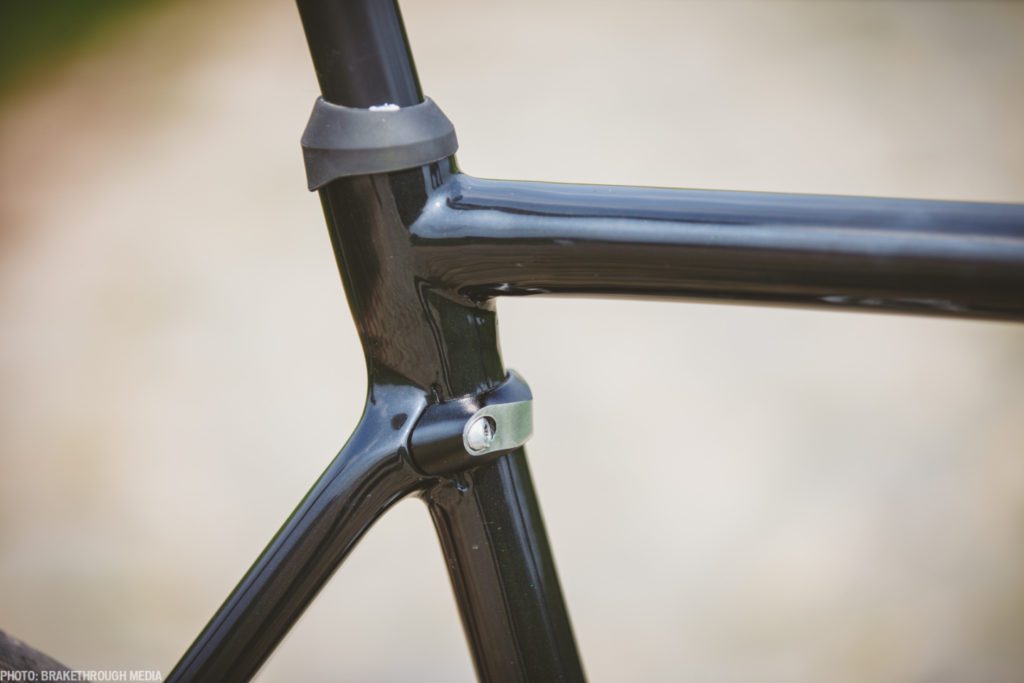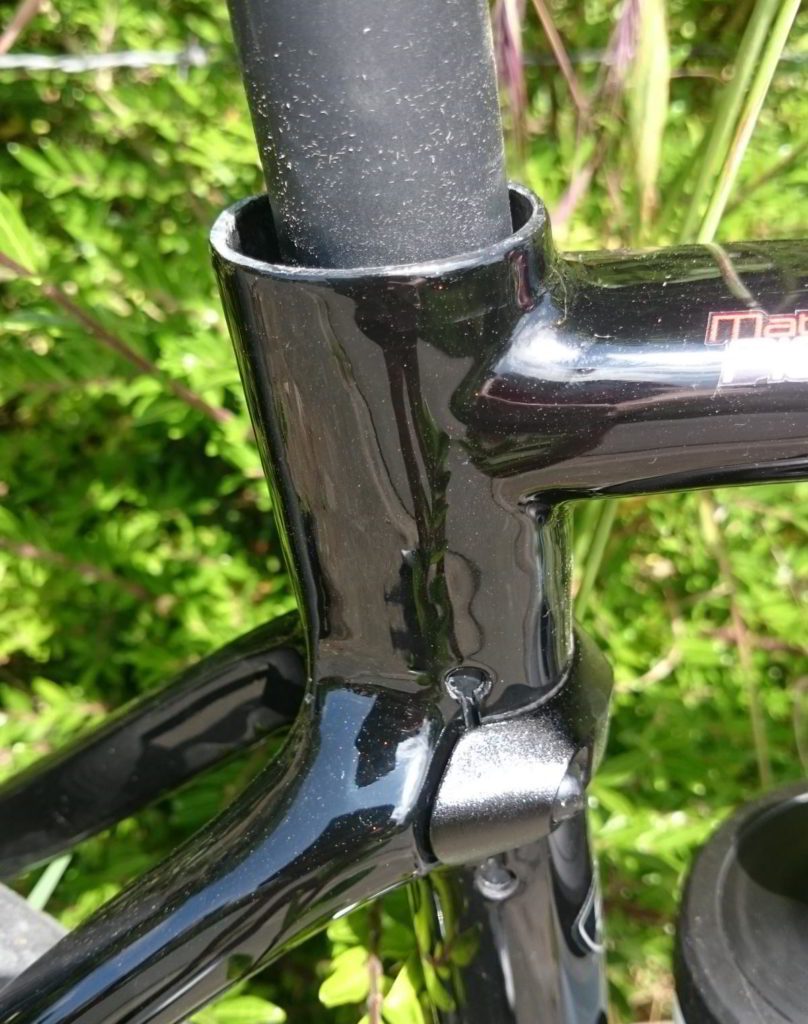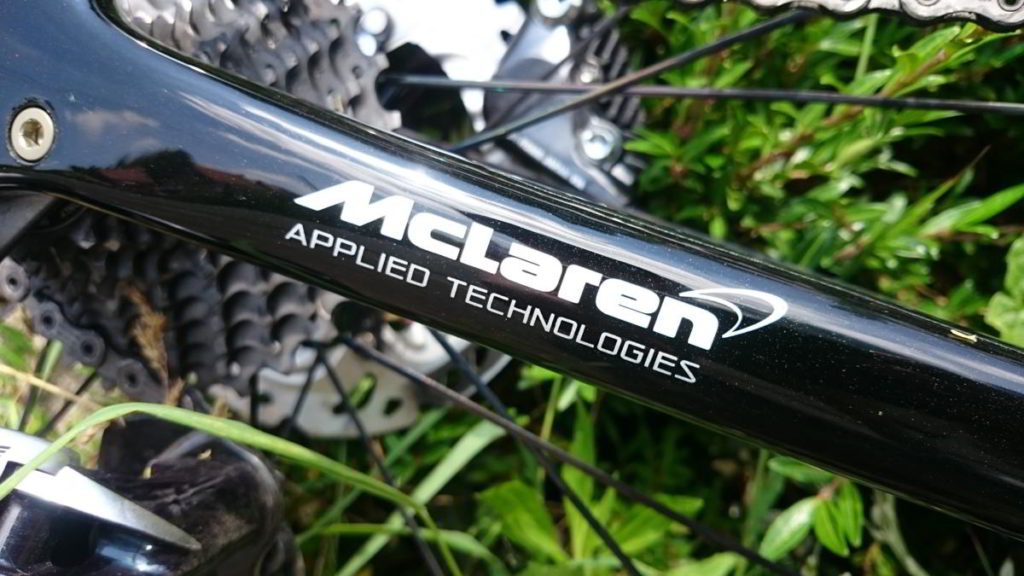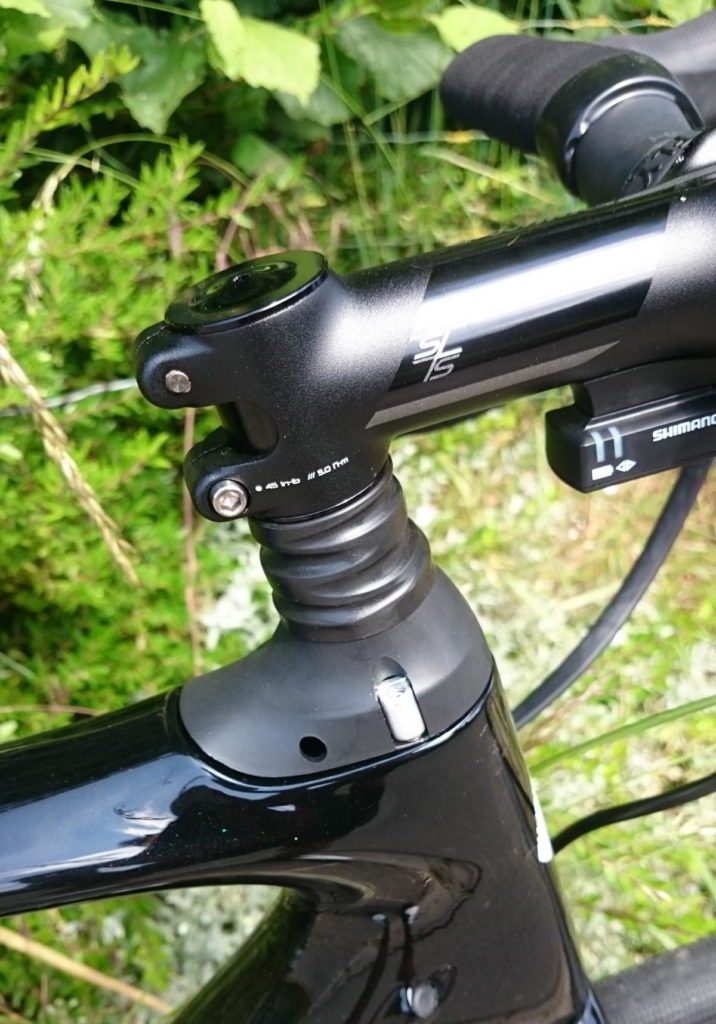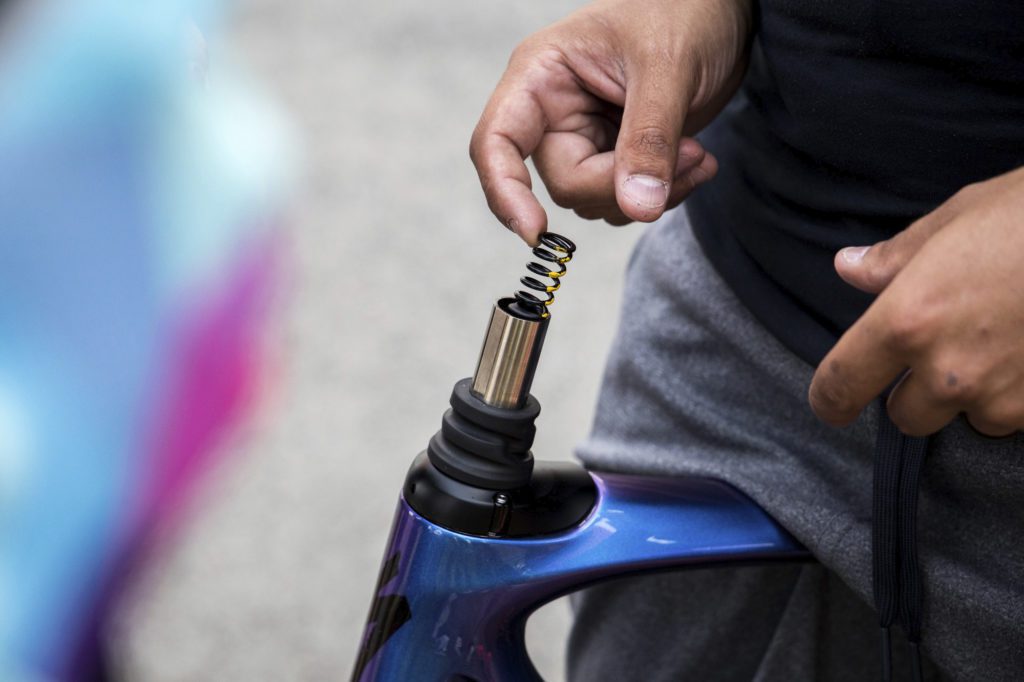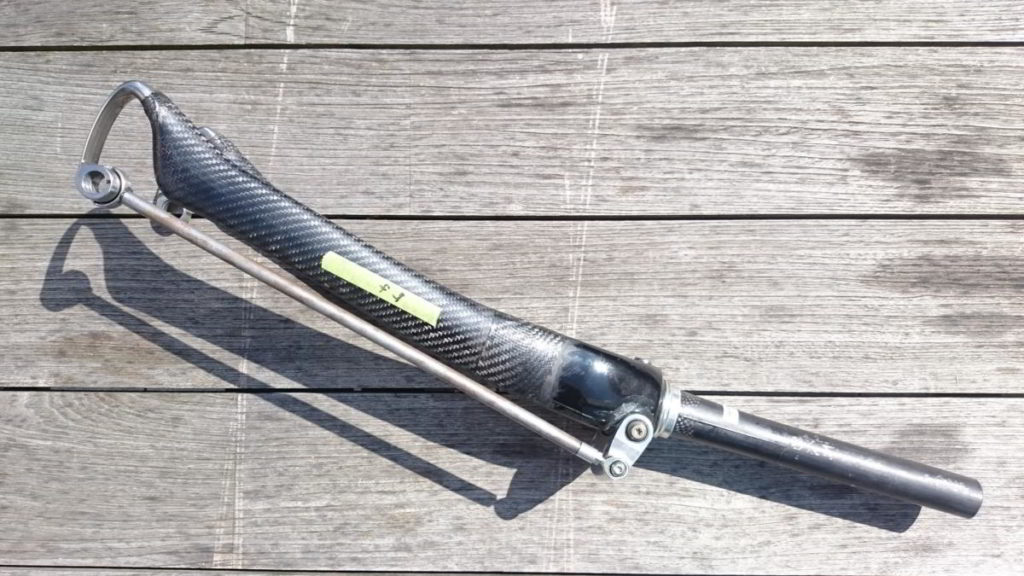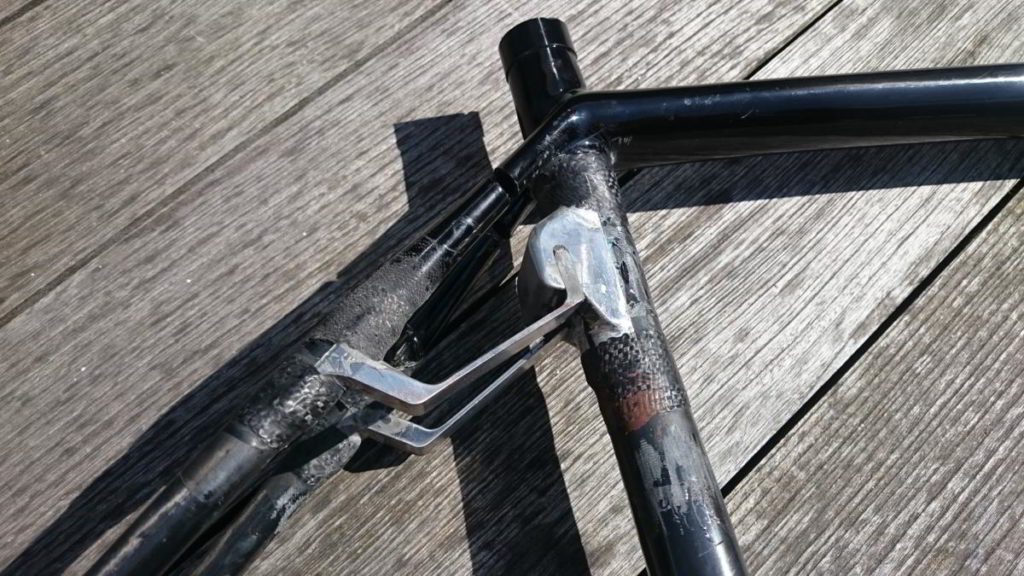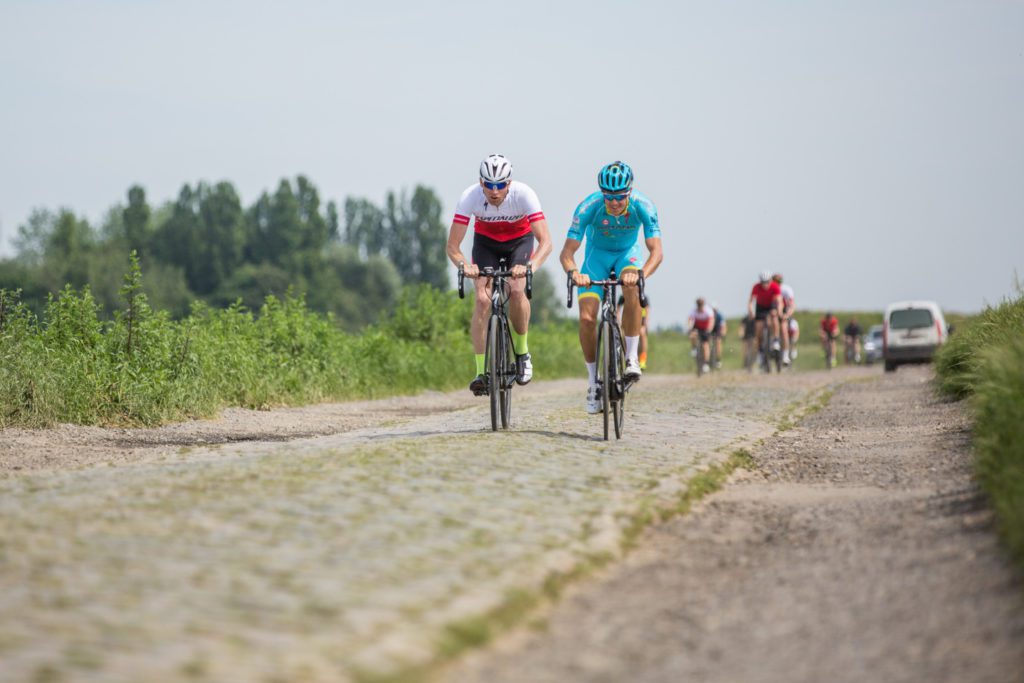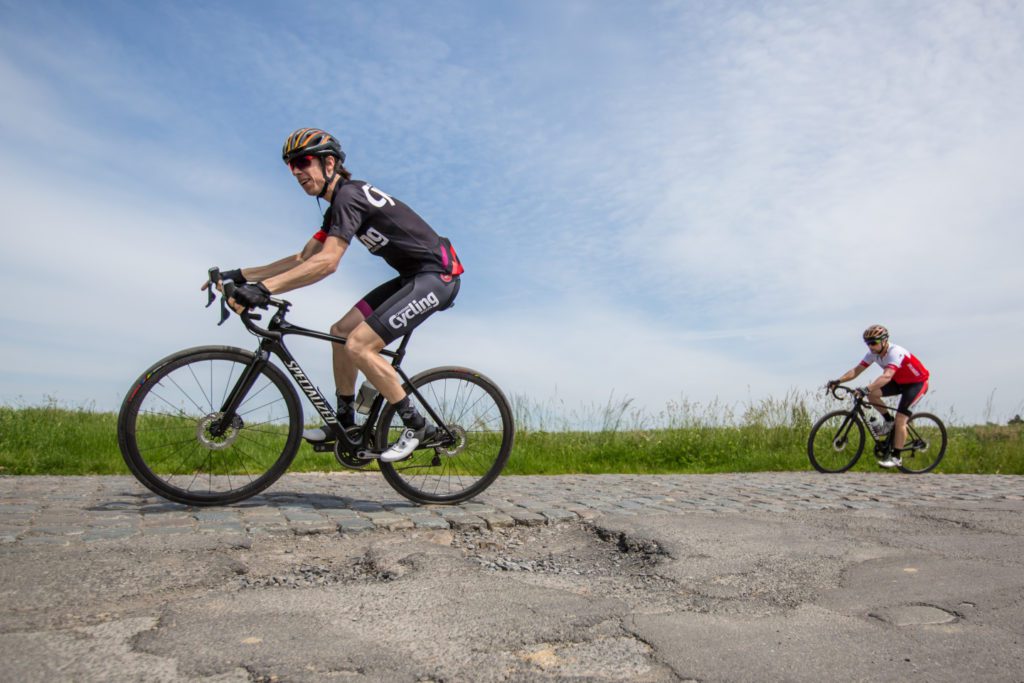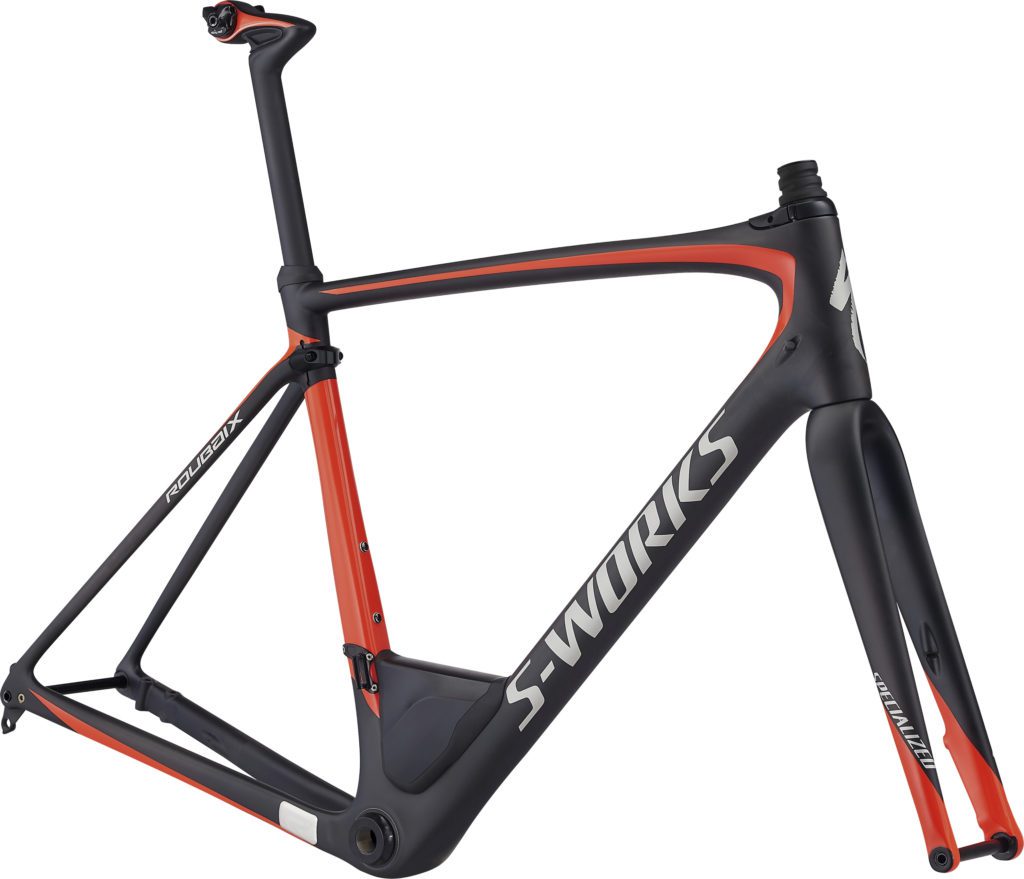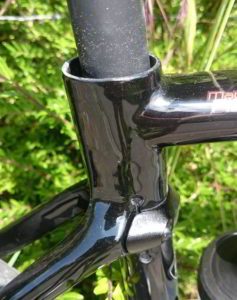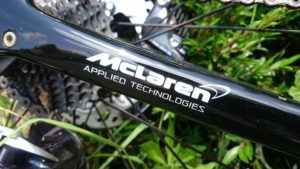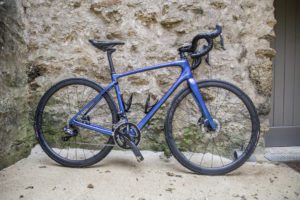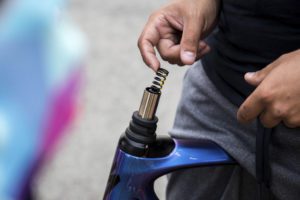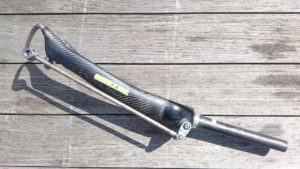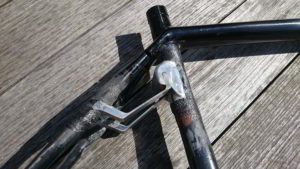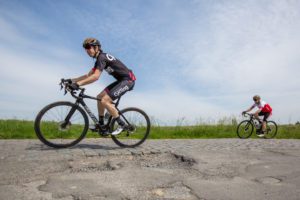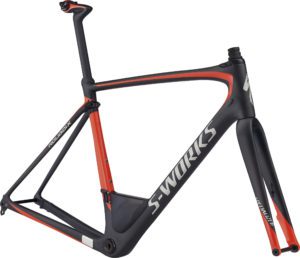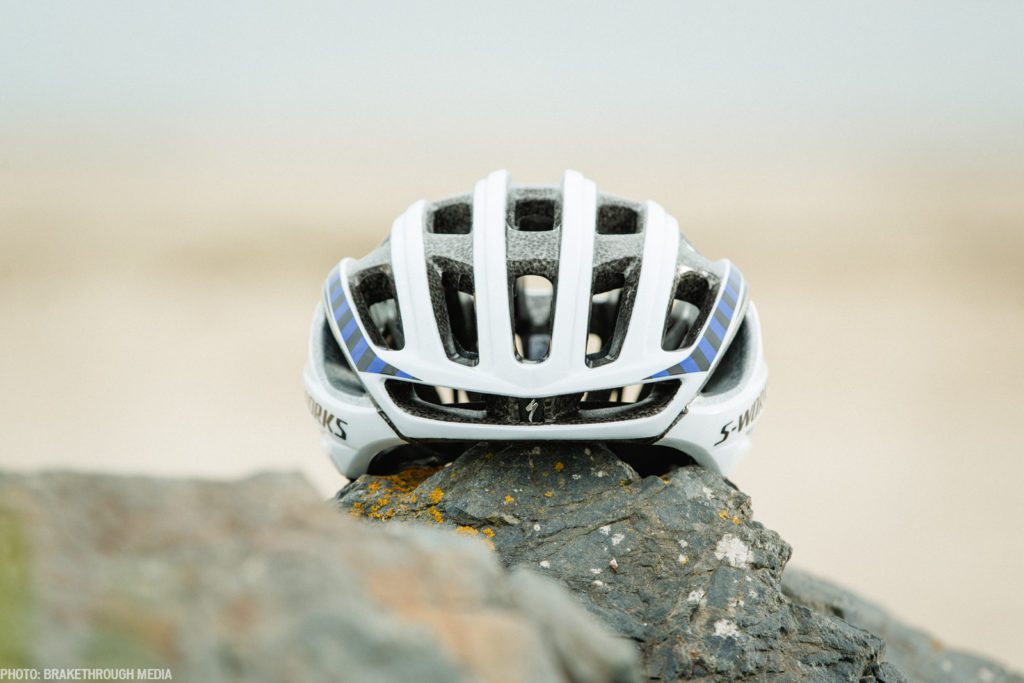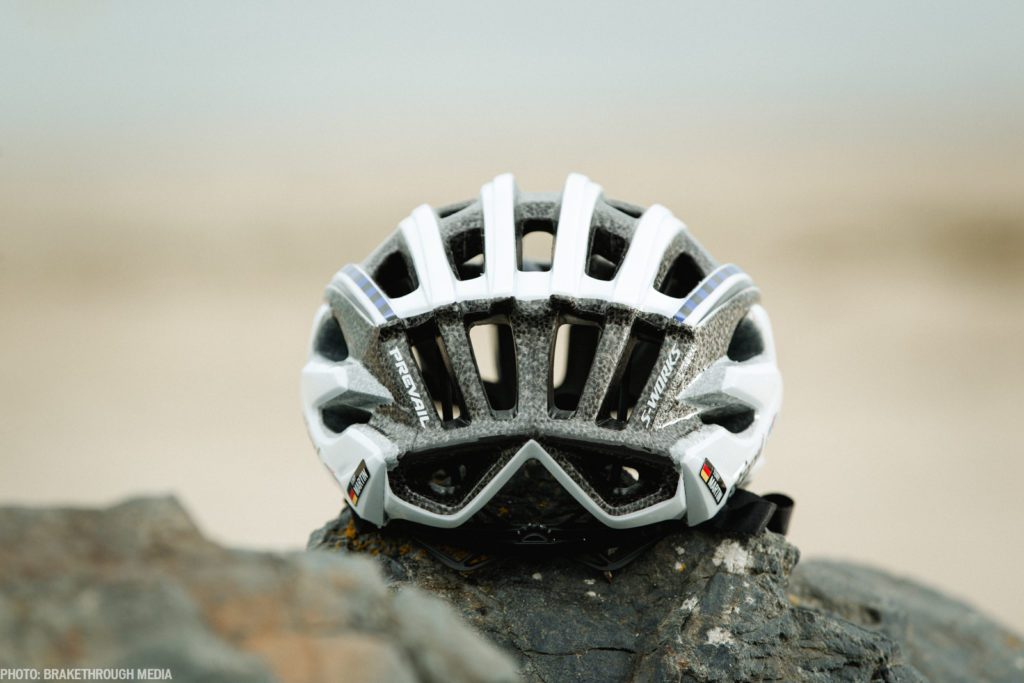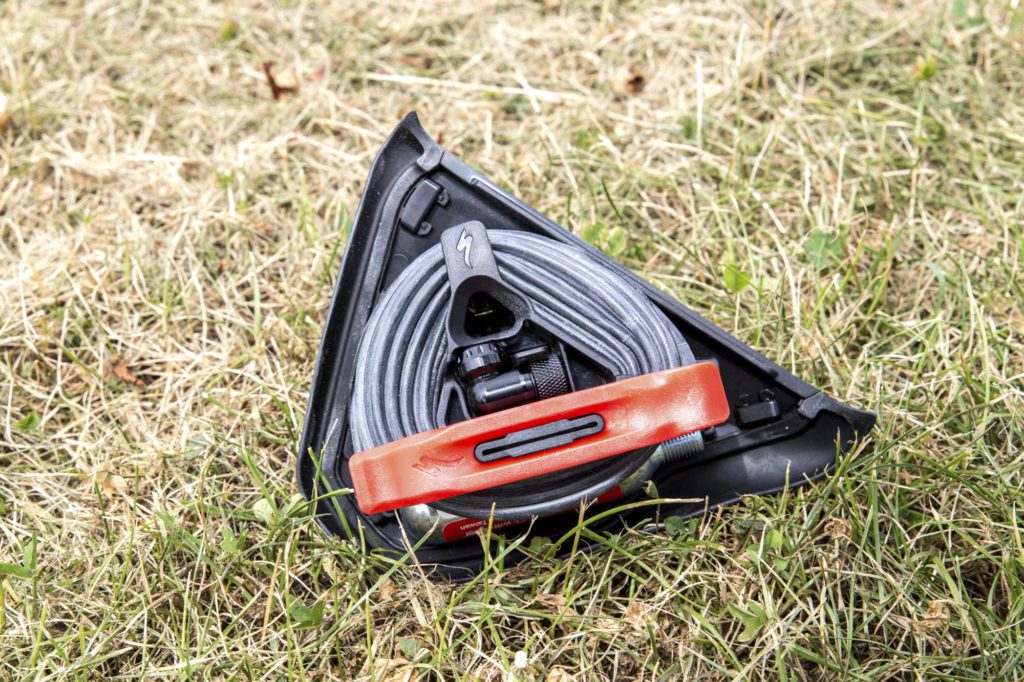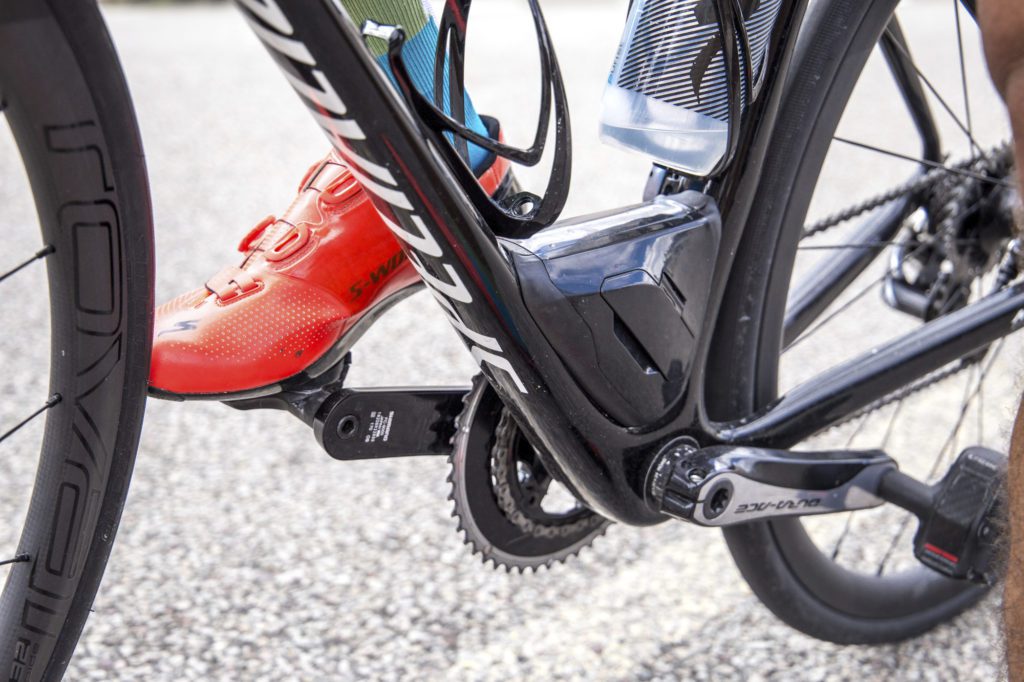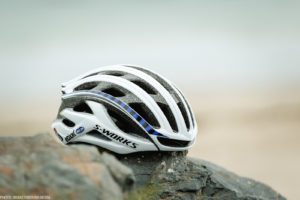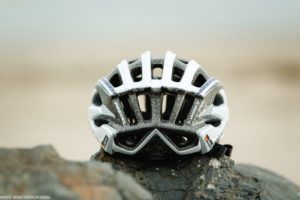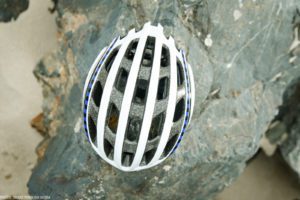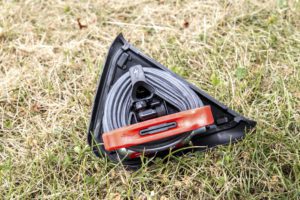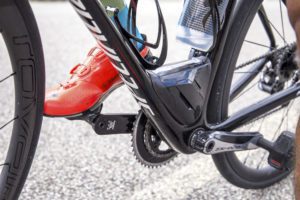2017 Specialized Roubaix makes its debut on the cobbles
The 2017 Specialized Roubaix gets some spring in for the Classics

In early June, I was in Belgium to see the new Specialized Roubaix. I thought it was really late for the Morgan Hill, Calif.-based company to set up in Kortrijk, the city that many professional teams base themselves in during Classics season. Wevelgem is just to the west, Kuurne and Harelbeke to the east. Roubaix, the town the bike was named after, is about 20 km southeast of Kortrijk, just across the border with France. The racing in Flanders and northern France had wrapped up almost two months previously. I learned later, however, that Specialized was simply previewing the 2017 Specialized Roubaix really early.
The endurance bike first appeared in 2004 with Zertz elastomer inserts in the chainstays and fork to dampen road vibrations. During the June presentation, just after members of the Specialized team took the cover off the Specialized Roubaix, I saw those Zertz inserts weren’t on the new bike. Instead, at the back, the seatpost clamp sat 65 mm below the top of the seat tube, which gave the seatpost some more sway. The familiar CG-R seatpost provided 18 mm of down and back movement. The most striking feature was in the steering tube, just above the head tube. It had a cartridge called Road Control (later dubbed FutureShock). The cartridge houses three springs that soak up bumps in the road. “This is basically backwards of how you’d make a mountain bike setup,” said Eric Schuda, performance manager. “There’s no damping and extremely low friction. It’s a simple design.”
Chris D’Aluisio, creative specialist for road, has been working on the Road Control cartridge for two years. In the ’90s, when D’Aluisio was at Cannondale, he was behind the Headshok Silk Road front suspension, suspension that sat at the bottom of the head tube. The Headshok technology was ridden in Paris-Roubaix in the late-’90s and into the early 2000s. The three springs in the Road Control cartridge are stacked and provide 20 mm of compliance: 17 mm in a downward direction and 3 mm upward. There’s no damping because D’Aluisio said that that would add friction, which would hinder the system’s ability to react quickly to the road. Road Control is simple. Mystifyingly simple. Would it really work?
Quite a few of us at the presentation assumed rider weight on the bars would press the Road Control system downward. We assumed there’d be bar bob. When I got out on the Roubaix later that day, the handling didn’t feel very different from a standard setup. Even sprinting out of the saddle with my hands in the drops, the bike behaved as a road bike should. D’Aluisio later explained that a rider, even a heavy rider, doesn’t exert enough force to compress the Road Control system that much. So, what were those springs doing exactly?
As I rode through West Flanders, I chatted with Duncan Bradley, head of design and simulation at McLaren Applied Technologies. He and his team helped Specialized with the design of the Roubaix with the data they gathered through simulations that explored the relationships between rider, bike, road surface and speed. To help me understand how the Road Control system was improving my ride, he used, not surprisingly I guess, an analogy with a car. Think of a car moving at speed along a road. When the wheels hit bumps in the road, they bounce around within the car’s wheel wells. The car itself continues down the road and remains level. The Road Control facilitates a similar process on the new Roubaix. While the springs are not very responsive to rider weight from above, they react very quickly to bumps in the road. With the springs working away, the tire stays in contact with the ground providing traction. The rider can continue to move forward instead of getting bounced around and losing speed.
The next day, I was able to compare the previous, Zertz-equipped model of the Roubaix with the new Road Control model. I took each bike along a stretch of Flemish cobbles. On the old Roubaix, I had to put more effort into keeping the bike on course as I seemed to ricochet off of the rocks. On the new model of Roubaix, I wouldn’t say I floated over the cobbles, but ride was smoother and more controlled.
With all the compliance features high up on the bike’s frame, designers could make more aggressive changes below. The head tube was shortened. Its angle, as well as the fork’s offset, now matched those of the race-oriented Tarmac. Chris Yu, ?head of applied technologies at Specialized, spoke of the challenges he often faces when designing tube shapes, specially for aerodynamics. Some shapes, for example, will reduce compliance where it’s needed. “But here, since we’re not relying on the fork to deflect and give you comfort, who cares?” Yu said. The new fork on Roubaix not only has Tarmac-level stiffness, which improves handling, but it’s more aero, too.
As Specialized looked into ways to get the most compliance possible into the bike, designers experiment with a few ideas. One was a particularly funky fork that had leaf spring–like extensions to the dropouts. At the back, they cut the seatstays just before the seat/top-tube junction. The stays were then connected to the seat tube via metal arms, which would add compliance. Yu mentioned that the cut seatstays simply didn’t work because the modification added vagueness to the bike’s handling. When you steer, it’s not just with your arms and the front of the bike. Your hips and the back of the bike are also an important part of the steering equation. By rejecting compliance-adding solutions that were placed low on the bike and by using ones that were high on the frame, Specialized could get all the stiffness it need for steering and sprinting. It also got a very high degree of smoothness.
The frame of S-Works version of the Roubaix, which will have flat-mount disc brakes, will weigh roughly 900 g. The team took weight out of the frame, fork and the bike’s new wheels to accommodate Road Control. The plan is to have the S-Works model spec’d with a SRAM eTap group. The total projected weight is 7.2 kg. The “project black” model I rode was equipped with the new Specialized Roval CLX 32 wheels. They are 32-mm deep and have a 20 mm inner rim width. The disc-brake versions are said to weigh 1,340 g, while an upcoming rim-brake version will be 1,280 g. The front wheel uses the same aero hub as the SLX 64. The wheels spin on CeramicSpeed bearings. Eric Schuda says the company is adopting new thru-axle standards: 142 x 12 at the rear and 100 x 12 at the front. The tires on the rims were Specialized S-Works Turbo 28-mm, which measured close to 30 mm for great traction and comfort.
While the bike is very racy, it still has a wide range of fit options, even with the shorter head tube. You have 30 mm of stack height adjustment. Specialized has designed riser bars, too. On some models, Specialized is adding a SWAT (storage water air and tools) box, a familiar feature on some of the company’s mountain bikes and time trial machines. The box is injection-moulded plastic, which bolts to the bike above the bottom bracket. One size fits every frame. Inside is a tube, one tire lever, a CO2 cartridge and control knob, and multi-tool. The box weighs about 180 g and about 400 g with all the gear. It has no aero benefit or penalty, but Yu added that the SWAT box means you don’t have the aero penalty of a seat bag.
The Specialized Ruby, the company’s women’s version of the Roubaix, has all the Road Control features. As for the Ruby’s geometry, it has a higher stack and longer wheelbase. The down tube has sharper edges and more design features. The smallest frame is 44 cm; 58 cm is the largest, with 48 cm, 51 cm, 54 cm and 56 cm in between. The Roubaix frames include the sizes 49 cm, 52 cm, 54 cm, 56 cm, 58 cm and 61 cm. On our rides, we sported the new Prevail helmet. It’s designed for performance, so the company reduced its weight compared with the previous version and made it more aero with more ventilation. It also sits lower on your head. It cuts a great profile and is very comfortable, but doesn’t work so well with some big-lens eyewear out there.
That day, members of Specialized, other journalists and I tackled iconic sections from the Spring Classics: the cobbles of Oude Kwaremont, Taaienberg (also referred to as “Boonenberg” for all the action Tom Boonen has initiated there) and the Carrefour de l’Arbre sector that features in Paris-Roubaix. There’s definitely a difference between the Belgian cobbles and the pavé of northern France. The French stuff is nastier: the cobbles seem bigger, rougher and have more space between them.
Before my group rode the French pavé, Jakob Fuglsang of Astana joined us. He was on a disc brake–equipped Campagnolo-build Roubaix. While Fuglsang is not a Classics specialist, he knows a thing or two about riding cobbles. He was Vincenzo Nibali’s lieutenant on Carrefour de l’Arbre and the other cobbled sections of Stage 5 of the 2014 Tour de France. While I, a light rider in the same weight class as Fuglsang, seemed to go backward on Carrefour (as I am no WorldTour rider), the pro seemed to float on the cobbles. There are definitely skills you needed to develop if you are going to tackle blocky roads. I can’t, however, imagine how horrible Carrefour de l’Arbre would have been on a bike other than the 2017 Specialized Roubaix. On such a bike, I’d even consider riding that sector again, someday.

